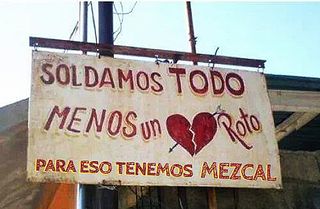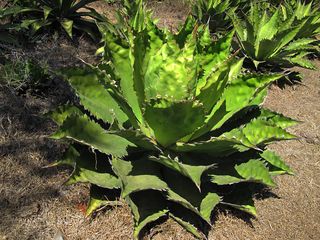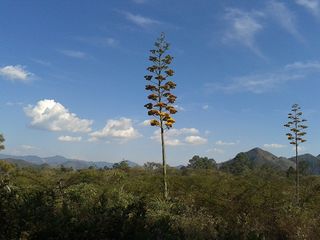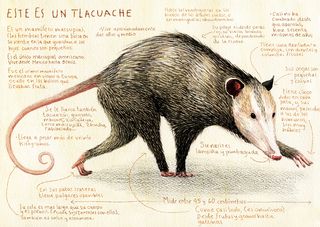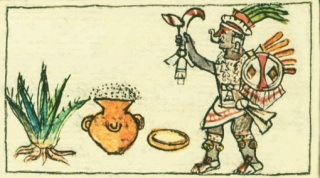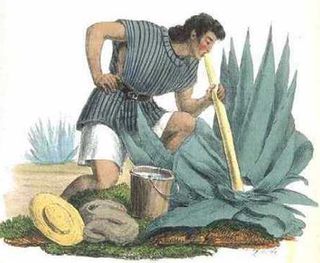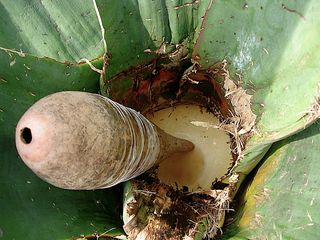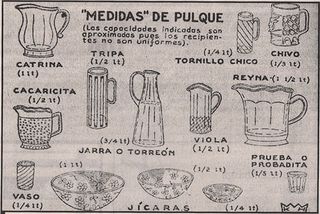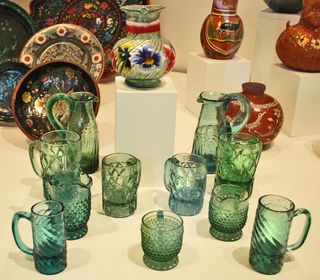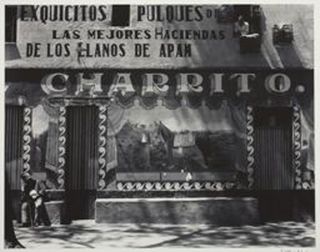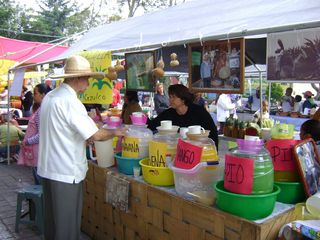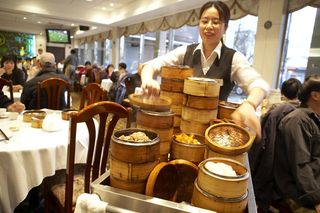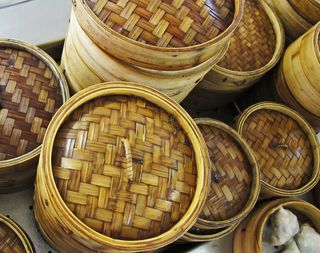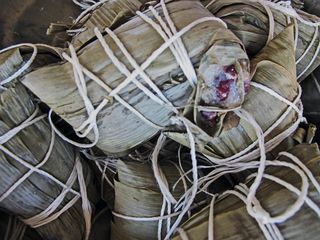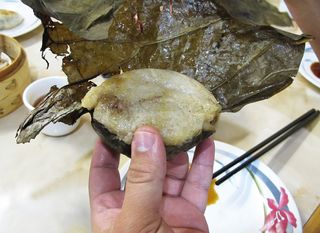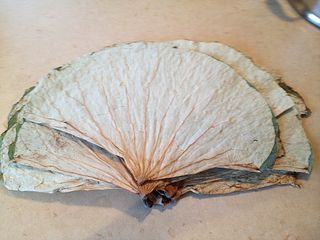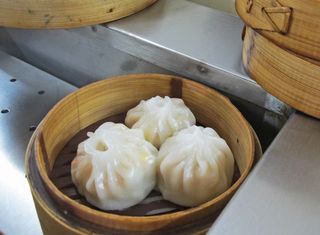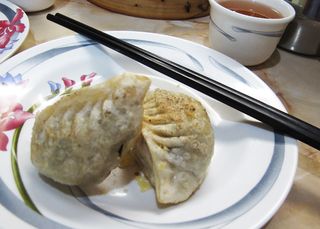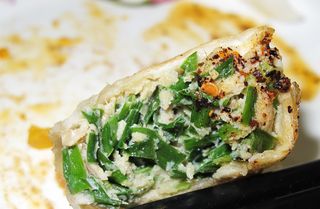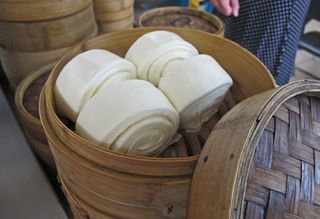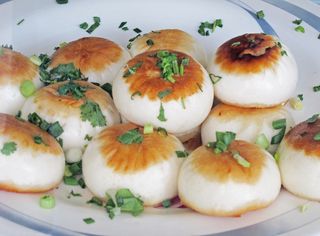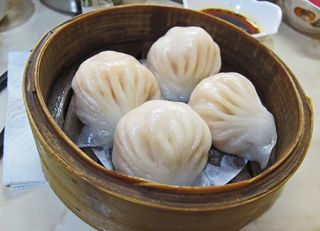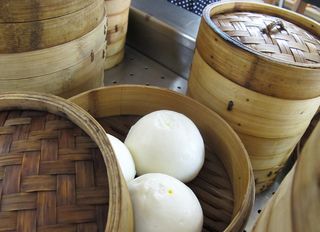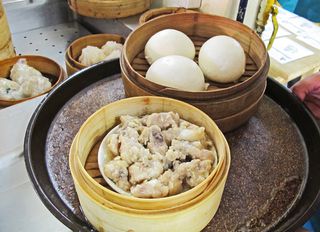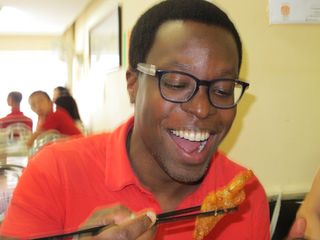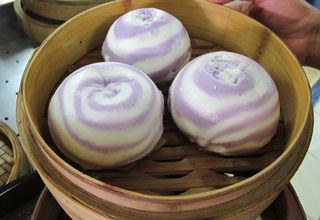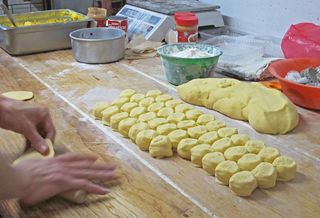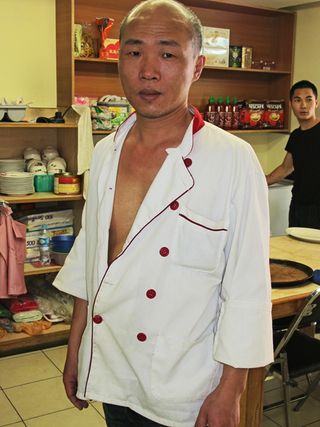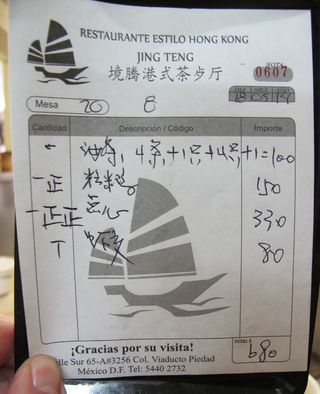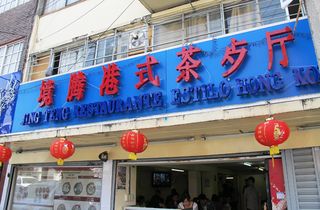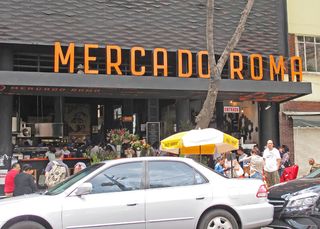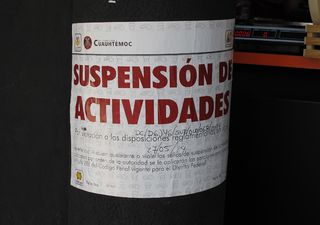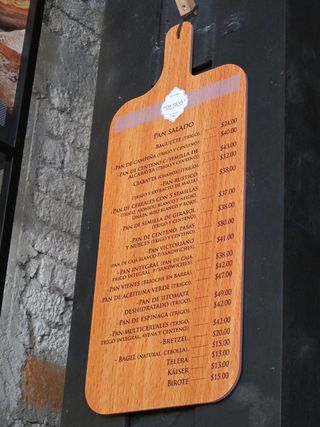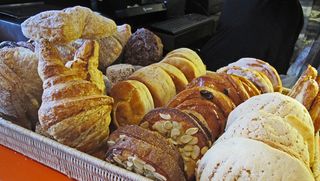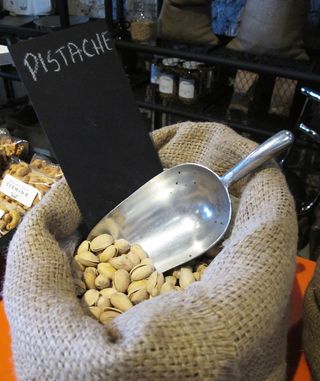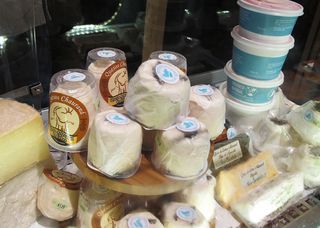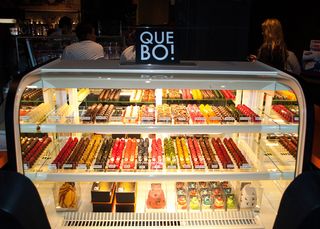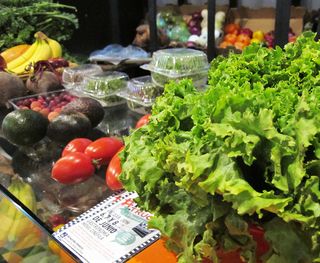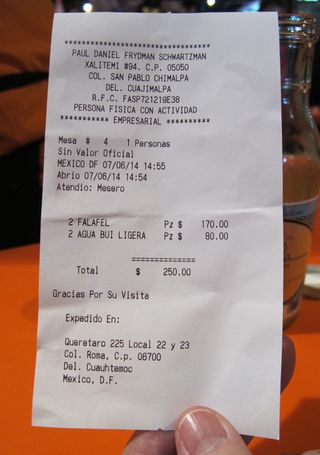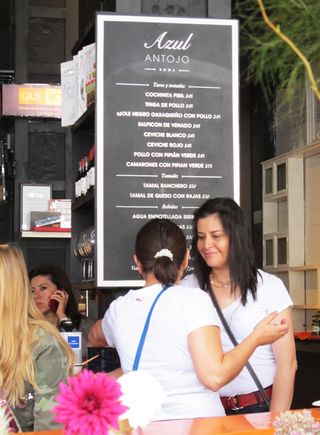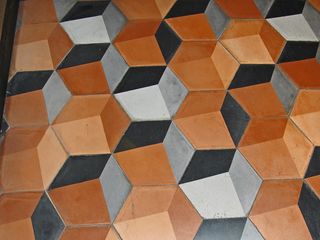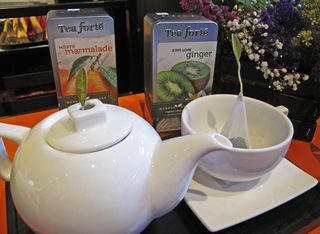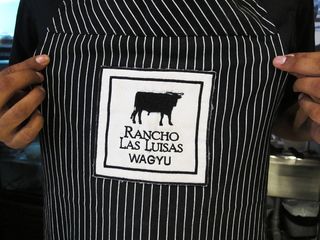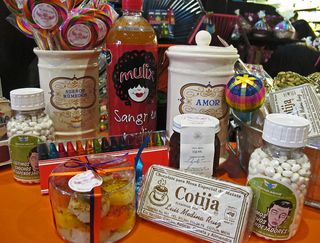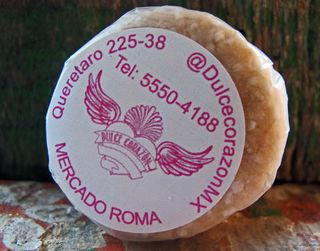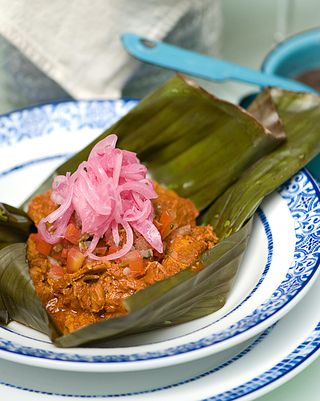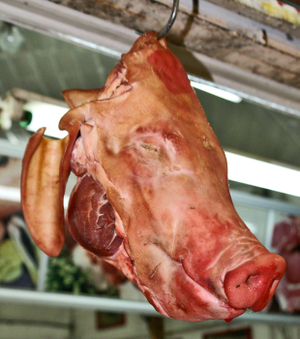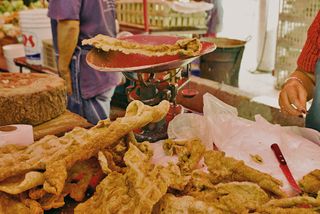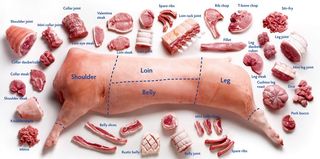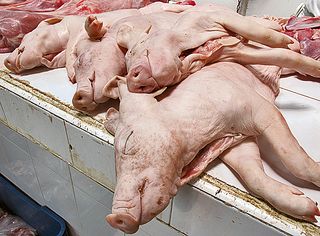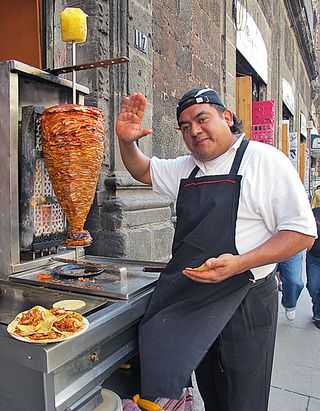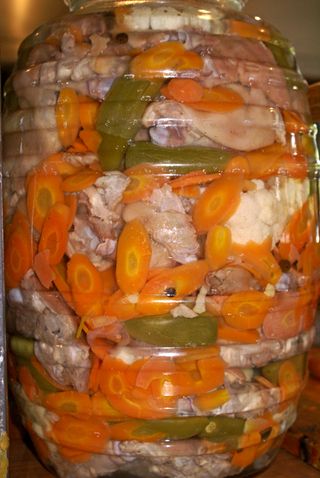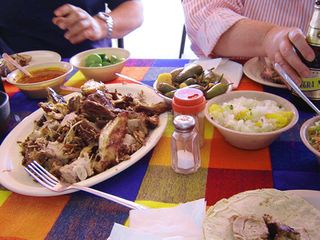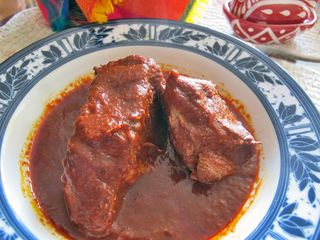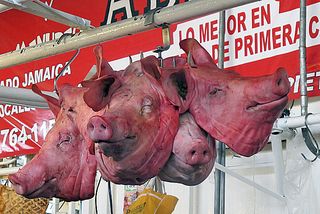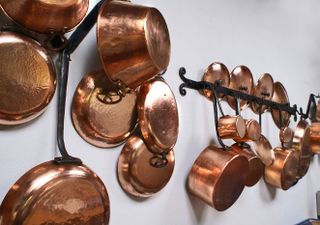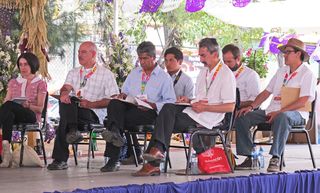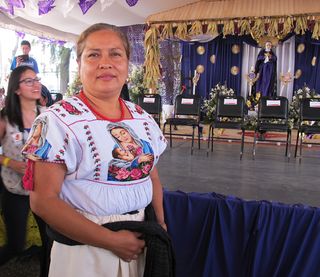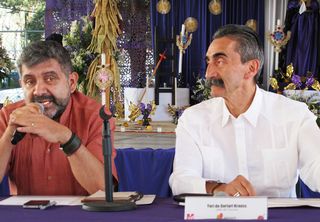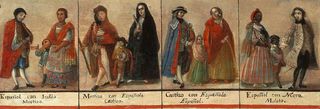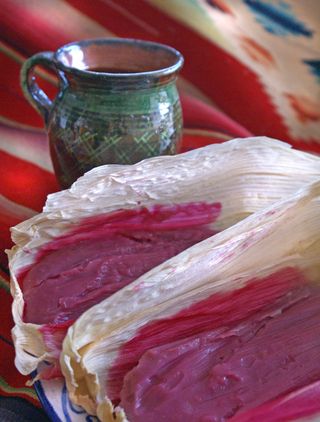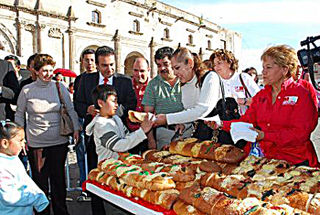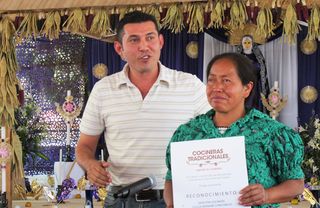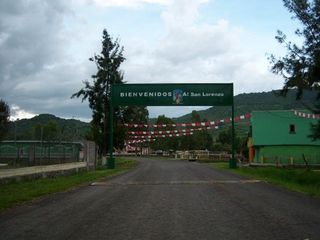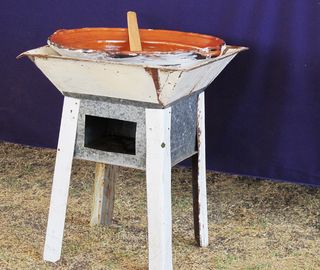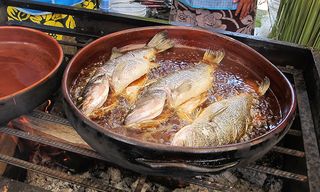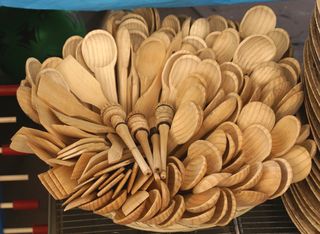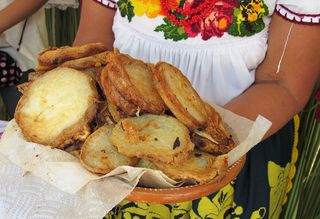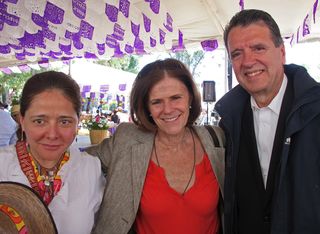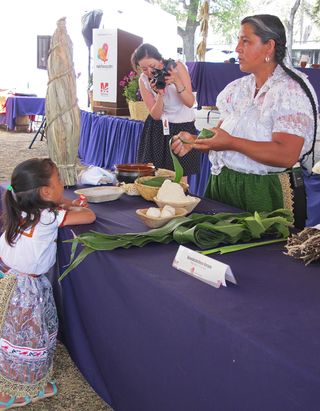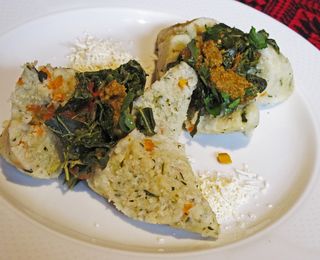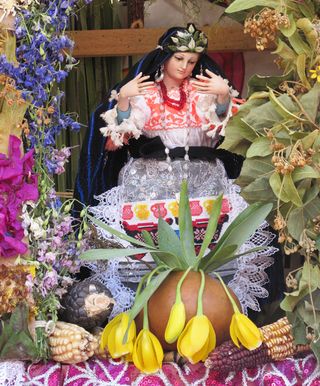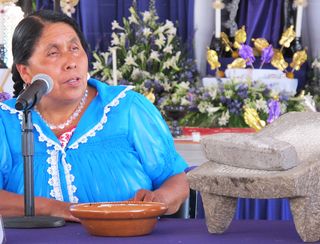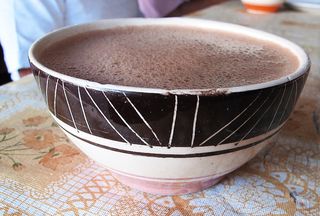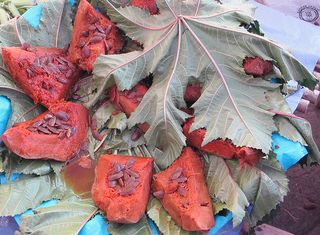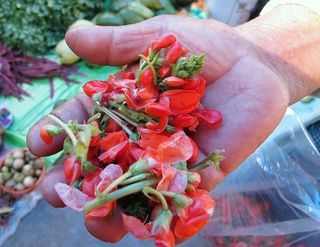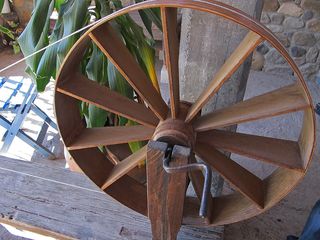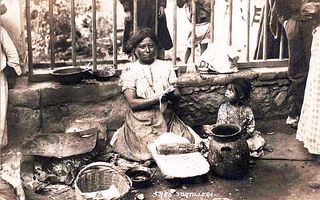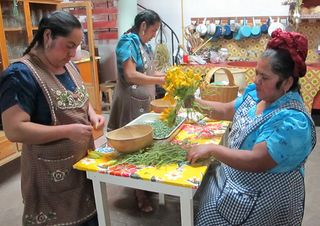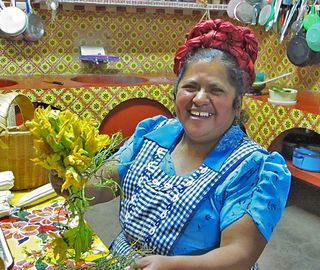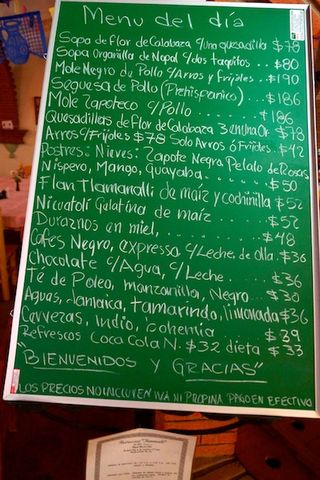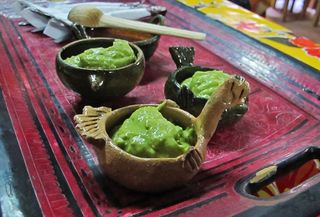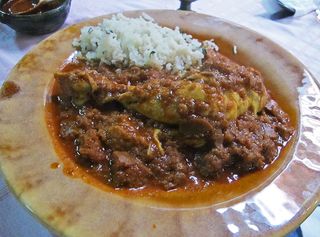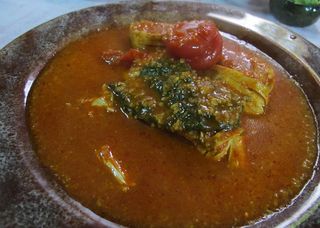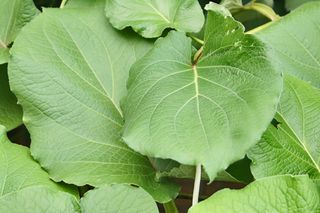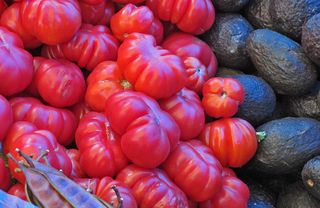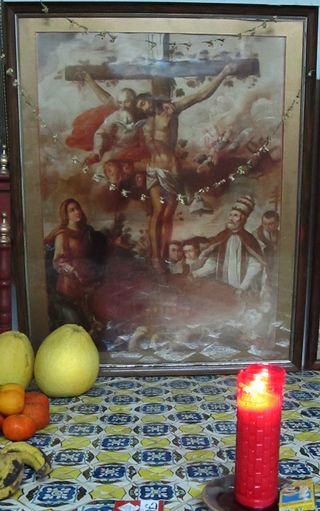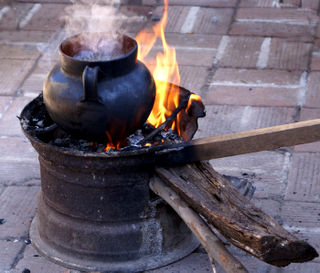
Make-do old fashioned cooking technique in Tzintzuntzan, Michoacán. Frijoles boil in a clay pot on the fogón (an on-the-ground cooking fire). The fire ring, in this case, is the wheel rim of a truck; the wood is what was available at the time of need. The clay pot ensures old-fashioned flavor and Mexico Cooks!' interest in the cooking process ensured old-fashioned hospitality. "Come back at 1:30," the cook told us. "The beans will be ready and I'll make you some tortillas."
I often talk about Mexico as a country full of contradictions and paradoxes. As a case in point, the Mexican kitchen of the 21st century lives cheek by jowl with the Mexican kitchen that predates the 16th century arrival of the Spanish, and we're all the richer for it. Ancient utensils and techniques are put to daily use in modern kitchens so beautiful they could be in any of today's slick kitchen design magazines. In today's Mexican kitchen, a molcajete and its tejolote (volcanic stone mortar and pestle) often sit on the counter next to a Kitchen-Aid mixer, and a wood-kiln fired olla de barro (clay bean pot) may well share cupboard space with a Le Creuset Dutch oven.
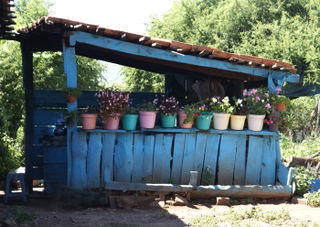
Outdoor kitchen in San José de la Torre, Michoacán. In a few very rural parts of Mexico, it is still possible to find these old-style kitchens, built apart from the main house to keep the rest of the house cool. Just inside the kitchen, to the left in the photograph, you can see steam rising from a boiling pot.
It was in the convents that many of the most wonderful Mexican foods were invented to take advantage of local products, mixing and matching them in old European recipes. Today, those recipes that consist of the mix of Europe and the New World are among the most traditional of the Mexican kitchen.
The cooking utensils that were in daily use in Europe were almost nonexistent in the New World. Because metal utensils like those used in Spain were prohibitively expensive in the New World, they were replaced by utensils made of indigenous clay. Clay pots were gradually perfected, in large part due to the incorporation of new glazing techniques and new designs. Other utensils were made from native volcanic stone mined predominantly in Mexico's central highlands. Prehispanic utensils such as the molcajete, the comal (clay griddle), and the metate (flat rectangular grinding stone) were common. Most home cooks in the days of the Spanish colonial period were indigenous women servants who brought their utensils with them into Spanish New World kitchens.

Metate y metlapil (volcanic grinding stone with its volcanic stone mano), similar to a rolling pin. The cook has been grinding masa de maíz azul (blue corn dough). She will use some of the water in the small pot to dampen the dough as needed. The white cloth both shades the dough and protects it from insects.
The volcanic stone metate, along with its metlapil de metate (similar to a rolling pin made of stone) was the principal cooking utensil in the prehispanic kitchen, and it's still used today in rural areas to grind nixtamal-ized corn for making tortilla masa (dough). Volcanic stone is porous and microscopic pieces of it break off into the corn as it is ground, becoming an essential part of the dough. It's so essential to the texture and flavor of the masa that even in enormous commercial processing plants, the corn-grinding stones are made of volcanic rock.
The metate is also used to grind dried chiles and other grains used to prepare moles and other complex dishes, and to prepare highly prized chocolate de metate used for cooking and preparing hot chocolate.
The second most important piece in the indigenous kitchen is the three-legged molcajete, a kind of volcanic stone grinding mortar. It's still widely used, especially for grinding soft ingredients such as tomatoes, green chiles, green onions, herbs, and other condiments. A well seasoned salsa de molcajete (sauce to be used at table, made in a molcajete) is the mark of a wonderful cook.
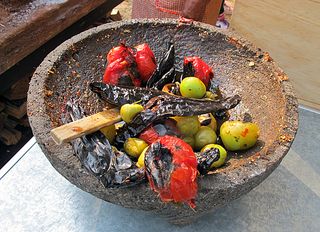
Ingredients for salsa, ready to prepare in a volcanic stone molcajete. At the bottom and top of the photograph are comal (griddle)-roasted Roma tomatoes. You can also see roasted tomates verdes (tomatillos) and dried, toasted chiles.
Family-operated workshops in certain Mexican villages carve locally mined volcanic stone into the familiar shape of the molcajete and the less frequently seen metate. It can be difficult to find molcajetes and metates at the source, unless you know where to look. The first time I ventured to one of these small villages, I expected to see molcajetes and metates for sale in stores. I discovered that I had to knock on the doors at private homes in the towns and ask if anyone there made molcajetes.
Fortunately there is an easier way for most of us to find a traditional molcajete or metate. Next time you're on a shopping expedition to one of Mexico's regional mercados, ask the merchants where to find a vendor who sells them. They usually range in price from $65 pesos for a tiny molcajete just big enough to use for serving salsa at the table to the mother of all molcajetes priced at $125 pesos. The vendors may also sell even bigger ones carved with the head of a pig. Those are priced at approximately $600 pesos.
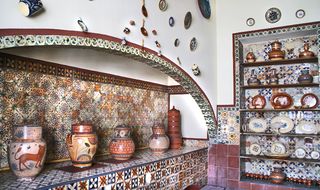
Classic Mexican kitchen from the 1920s. Casa Zuno, Guadalajara.
The basis and essence of the earliest and most current cuisines of Mexico is what is called the corn kitchen. Corn and corn masa have been used to prepare an infinite variety of staple foods in this country since before written history. The word masa comes from a Nauhatl word that means 'our flesh'. It's said that the Nauhatls believed that their gods created man and woman from corn dough. That equation of corn with the flesh of the human being is more telling than any long description of prehispanic, colonial, or present-day eating habits could be. Corn was all, and in many Mexican homes today, corn is still all.
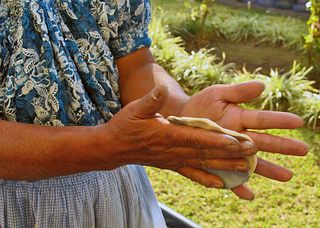
For milennia, corn tortillas have traditionally been made by hand. Small balls of corn masa (dough) are rhythmically patted into near-perfect rounds, then toasted on a comal (griddle) over wood fire. The technique is passed from mother to daughter and mother to daughter in families everywhere in Mexico; girls start pat-pat-patting masa into tortillas almost from the time they start to walk.
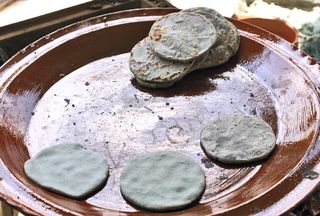
Blue corn gorditas (thick tortillas) toasting over wood fire on a clay comal. These gorditas are also hand-patted, but are left relatively thick so that after toasting, they can be split and stuffed with your choice of delicious fillings and salsas.
The corn tortilla has always been the single most important staple food of Mexico. Tortillas with a serving of beans are a perfect protein. In many impoverished Mexican homes, corn tortillas and a pot of beans are even today the only daily fare. At all levels of society, a meal eaten at home is not complete without a large stack of tortillas, carefully wrapped in a special napkin. A family of five can easily eat a kilo of tortillas as many as eighteen tortillas per person or more along with the comida (main meal of the day).
From the time tortillas originated, women have patted balls of damp masa by hand to form it into perfect circles. It's still a mark of pride for a restaurant to offer tortillas "hechas a mano" (hand made). In some homes, especially in very rural areas, the rhythmic pat-pat-patting of hands making tortillas marks the dinner hour.
In many cases 'hand made' now means tortillas prepared using a tortilla press made of either wood or metal. Masa can either be purchased ready-made at a nearby tortillería or cooks can prepare it from dried corn. Either way, once the masa is ready the tortillas must be made quickly or the masa will be too dry to work. A piece of waxed paper or one half of a plastic storage bag is placed on the bottom half of the tortilla press. A ball of dough the size of a golf ball or slightly larger is pulled from the bulk of masa; then the dough is flattened slightly by hand and placed on the plastic. A second plastic or waxed paper sheet is placed on top of the dough and the press is squeezed shut.
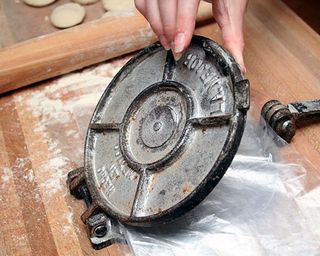
Metal tortilla press in use. Note the sheets of plastic; one sheet is on the base of the press and the second is placed on the ball of dough. Photo courtesy My Home Cooking.
Open the press and there's a perfectly round tortilla, ready to have the plastic peeled off. Now do it again. And again. And again, and remember, there are five of you in the family and at least some of you will eat eighteen tortillas each at this meal! Even using the modern convenience of a tortilla press, it's still backbreaking work to prepare enough tortillas for a family's mealtime needs.
Of course Mexico is not only about rural tradition and the indigenous corn kitchen. I recently talked about recent trends in the Mexican kitchen with Licenciada Virginia Jurado Thierry, owner of Arquitectura en Cocinas in Guadalajara. Walking into her design center in fashionable Colonia Providencia is like walking into a high end kitchen designer's showroom anywhere in the world.
Sleekly modern wood cabinets are shown with stainless steel refrigerators and restaurant quality stoves; glass-front cupboards reflect top-of-the-line small appliances crouching on quartz polymer resin counters. When I explained the nature of this article, Lic. Jurado nodded and invited me into her private office to chat.
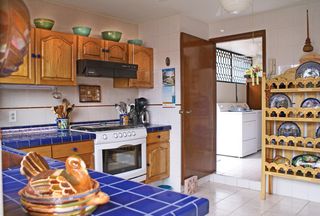
This was Mexico Cooks!' home kitchen in Morelia, Michoacán. The pottery, tile countertops and copper sink–and the wooden trastero (dish cupboard)–are traditional styles. The over-and-under-the-counter cupboards and the stove, washer, and dryer are new-fangled modern conveniences.
"So many people think the design of the Mexican kitchen is only done with talavera tiles. New kitchens are constantly evolving, and new design here is similar to new design everywhere. As you noticed as you walked through our showrooms, we offer nothing but the finest in kitchens. Everything is designed with convenience and efficiency and performance in mind." She paused to reach behind her and take down a thick notebook. "These are some of the products we offer to our clients."
We flipped through the book. Familiar names in high-quality, high-price tag kitchen design jumped out at me: European lines like Miele and Smeg, United States manufacturers such as SubZero, Wolf, Viking, and Dacor, and the noteworthy Italian Valcucina line were just a few important manufacturers' names I noticed. "We can offer the client a stove for $5000 pesos or we can offer the client a stove for $15,000 U.S. Usually we find a meeting place somewhere in between those figures," Lic. Jurado told me.

Twenty-first century Mexicans have gone crazy for the minimalist look, even in their kitchens. Sleek, modern design is most common in new construction. Photo courtesy Dotavideo.
Lic. Jurado smiled. "Our clients really want a bright, clean look. That translates into light woods such as oak for cabinets, lots of whites and tones of gray, stainless steel and glass. People also want aluminum accessories and opaque glass, especially for cupboard doors. Paint colors are light. For counter tops, we're getting many requests for melamine in new, stain-free colors, and polymer resin quartz in light colors. And some people want granite, or colored concrete. It's a whole range of effects, but with a very clean European look."
We've traveled more than 500 years, from pre-colonial days to the 21st century, in the course of a brief article. The contradictions of Mexico, even in as small a detail as the utensils and design of a kitchen, still amaze me.
Looking for a tailored-to-your-interests specialized tour in Mexico? Click here: Tours.
